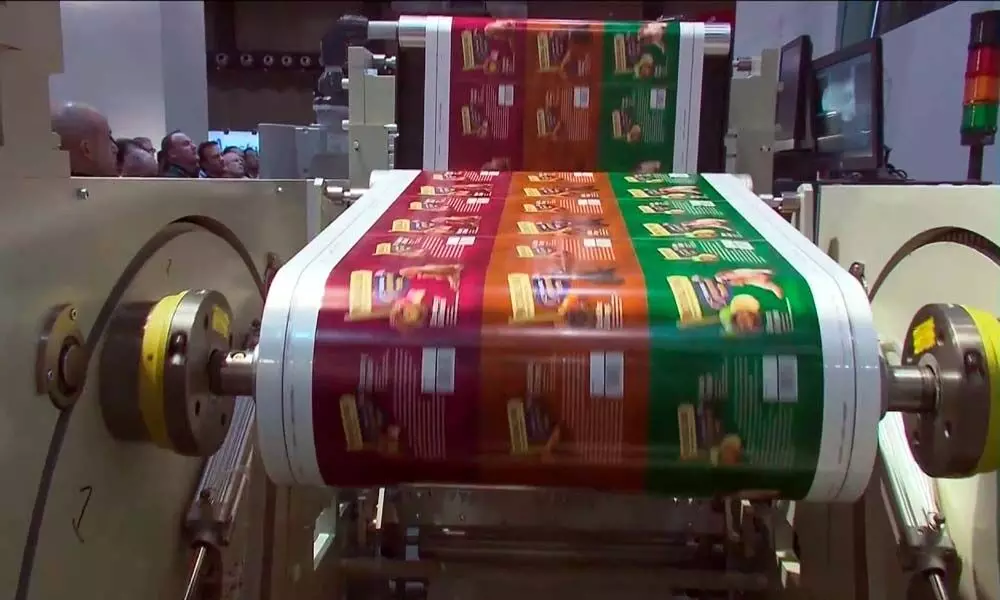Sustainability holds key to packaging sector's growth
It's not just the pandemic that is having an impact on the industry. Governments around the world are planning for or introducing more environmental measures, establishing fast-emerging strategies or restrictions on waste, food contact and food safe materials, the use of plastics, recycling measures, energy usage, power generation, transport and travel
image for illustrative purpose

Automation of all processes which require key operating skills will also play crucial role in 2021
Sustainability, in all its many guises, will be the key theme for the packaging industry in 2021. The Covid-19 pandemic demonstrated how vulnerable companies are in terms of staff with key skills, disruption of supply chains and the need to quickly re-orient production, sales and marketing to compensate for lost business.
Sustainability in this wider sense will mean above all the automation of all processes which require key operator skills. Not only increased automation of conventional, digital printing and converting systems but also remote sensor networks to monitor machines in real time and robust remote working systems for design, pre-press and office management functions.
At the same time, the continuing Covid crisis will stoke demands for a more sustainable future, reflected most recently in a number of key label and packaging industry initiatives in liner waste recovery and digital watermarking of plastics. At the converter level this will mean a relentless focus on waste reduction, reduced carbon footprint and zero waste to landfill.
Finally, and perhaps most importantly, we will see an increased focus on building a pipeline of talent to take the pressure off a small number of older and more vulnerable key workers to build a more sustainable future.
With no end yet fully in sight for the coronavirus pandemic it seems that the challenges faced by manufacturers and suppliers are likely to continue for much of the coming year. Yes, vaccines may be getting closer to stopping the disease, but the longer term impact on the label industry will certainly have an effect on forthcoming investment decisions, leading to ever more production automation, enhanced data management and information handling and the way employees work - both in the factory and from home. Having an effective, seamless and automated workflow of jobs from customer input, through supplier chains, the label manufacturing processes, proofing, flexibility in decision making, maintenance planning, and output through waste management, shipping systems, customer liaison and invoicing will become even more critical in the coming few years.
But it's not just the pandemic that is having an impact on the industry. Governments around the world are planning for or introducing more environmental measures, establishing fast-emerging strategies or restrictions on waste, food contact and food safe materials, the use of plastics, recycling measures, energy usage, power generation, transport and travel. Things that label converters may have placed as relatively low category investment are suddenly being forced nearer the top of the agenda. Is the industry ready for what is almost certainly to come? Is somebody in the business tasked with keeping up to speed on such changes and what they mean? The use of solar power, back-up energy generation, electric vehicle charging, flying taxis and drone shipping and delivery potential? Investment strategies for tomorrow need to be being planned for today. The importance of sustainability to consumers will gain momentum in 2021 and through our continued innovation brands and converters now have a broader range of labeling solutions to advance the circularity of their packaging in the coming year.
Intelligent labels will also play a key role in 2021 as they enable the revolution that is occurring in retail. E-commerce is a prime beneficiary of this revolution and intelligent labels provide retailers and consumers with the supply chain visibility that is essential to the continued growth in this segment.
Key trends will be materials with lower environmental impact (lower carbon footprint, films with recycled content films), and materials which allow easier recycling of the primary packaging. Significant commitments and actions have been made by global brands to reduce their carbon footprint and enable a more circular economy. From this we expect to see more on-pack communication about the environmental positioning of individual products to help consumers make more informed decisions. As consumers increasingly include product environmental attributes in their spending decisions, brands will focus on more areas that will allow them to differentiate. This trend will accelerate the need to include the types of labeling materials used and we expect to see growing demand for facestock films with a low carbon footprint (carbon neutral) and films with post-consumer recycled content.
The brands' aim will be to increase the recyclability of primary packaging – facilitating the inclusion of their product packaging into collection processes and allow them to be sorted into specific recycling streams. This in turn will allow more material to be recovered and reused as recycled content in the production of new filmic substrates.

